Essential Pool Closing Tips: Protect Your Pool This Winter
June 12th, 2024
June 12th, 2024
As the crisp autumn air begins to nip at your nose, the once bustling poolside gatherings start to dwindle, hinting that it's time to bid farewell to the swimming season. Closing a pool is not merely about covering it up and calling it a day. Instead, it involves a careful process that ensures your pool remains protected and ready for when the warmer months roll around again. The key to this process? A well-chosen pool closing kit, packed with essential chemicals designed to safeguard your pool during its winter slumber.
When preparing to close your pool, it can feel a bit like preparing a garden for winter. Just as you would not leave plants to fend for themselves against frost, your pool needs similar protection to weather the colder months. Overlook one critical detail, and you might find yourself dealing with algae blooms, stains, or damaged equipment when you open the pool again.
Each pool has its own personality depending on location, usage, and water type, requiring a unique blend of chemicals. Identifying exactly what your pool needs can be daunting, especially with the myriad of products available on the market. From algaecides to pH balancers, each component plays a crucial role. Through this guide, we’ll demystify the chemical requirements, ensuring your pool remains in pristine condition, no matter how chilly it gets outside.
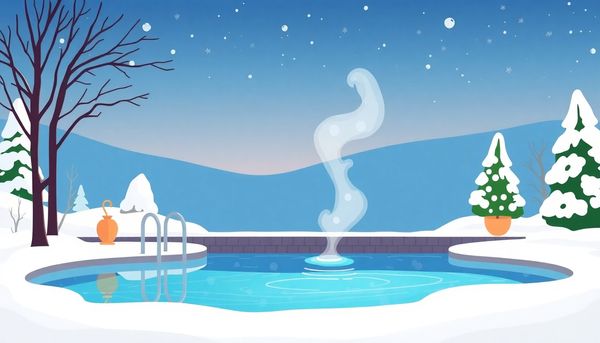
When the last summer splash subsides and the crisp chill begins to paint your yard, the thought of closing your pool for winter might seem daunting. Yet, with the right chemicals, this process becomes straightforward and manageable. The selection of essential winter chemicals is crucial to ensure your pool hibernates peacefully through the cold months without unwanted surprises in spring.
First, let's talk about algaecide. A 60% Polyquat Algaecide stands as a must-have. Its superior formula effectively tackles algae without the risk of staining, a common pitfall with copper-based options. Avoid the foamy mess and potential discolorations by choosing this more refined solution. It's a bit pricier, but the peace of mind it offers is invaluable.
Consider investing in a Winter Pill. Although not strictly necessary, it provides an additional layer of protection by slowly releasing a concoction of enzymes and clarifiers to fend off stains, scale, and cloudy water. This slow-release product is a hidden hero, especially if your water is prone to high metal content.
For those who enjoy convenience, a winterizing kit might seem tempting. However, remember that a thorough pre-winter cleaning and a dependable pool cover can save you from splurging on extras like stain preventers or phosphate removers. The key is to balance simplicity with efficacy, ensuring that come spring, your pool is as inviting as a sunny day.
Determining whether a pool closing kit is essential for your seasonal shutdown can be likened to selecting the right tools for a home project. Just because something exists doesn't mean it's necessary. Your decision should be based on your pool's specific needs and your comfort with DIY maintenance.
Pool closing kits are convenient, bundling everything you might require to keep your pool pristine throughout the chilly months. They typically include a range of chemicals: winter algaecide, stain preventers, non-chlorine shock, and sometimes an oil-absorbing sponge or pool floater. However, not every pool requires the entire ensemble these kits offer. For instance, if you’ve maintained a regular cleaning routine and ensured a proper chemical balance before closing, some elements, like additional oxidizers or phosphate removers, may be excessive.
An acquaintance of mine once swore by the simplicity of a 60% Polyquat Algaecide paired with a solid winter cover for his above-ground pool. This approach kept his water crystal clear without the extra cost of a kit. His secret? A thorough cleaning process and regular water testing. By understanding your pool's chemistry and condition, you can decide if a closing kit is worth the investment or if a more tailored approach will suffice.
Ultimately, the decision hinges on your willingness to experiment and learn what works best for your pool's unique environment.
When it comes to choosing an algaecide for closing your pool, the decision isn't as simple as grabbing the first bottle you see. When I first closed my pool for winter, I mistakenly picked a copper-based algaecide, drawn in by its lower price. Unfortunately, the spring thaw revealed unpleasant stains that required extra scrubbing. This experience taught me the true value of selecting the right product from the start.
The key lies in opting for a 60% Polyquat algaecide. While it may seem pricier than its copper-based counterparts, this non-copper formula offers several benefits that justify the expense. Not only does it effectively combat algae during the colder months, but it also avoids the foaming and staining issues that can arise with copper-based solutions. This can be crucial, especially if your water has a high metal content.
Additionally, consider your pool's unique needs and local climate. If your area experiences mild winters, algae can become active if temperatures rise slightly. In such cases, a high-quality algaecide becomes your pool's best defense. Investing in a Polyquat algaecide is like buying peace of mind, ensuring that when spring arrives, your pool water remains inviting and free from the dreaded green hue. Selecting wisely now can save you time and effort when the sun returns.
When the summer sun begins to wane and cooler breezes signal a change of season, the thought of closing your pool might feel like a farewell to fun. Yet, a strategic and well-planned closing routine ensures that your pool remains in top condition for the next splash-ready season. Start by giving it a thorough cleaning. Skim the surface, vacuum the floor, and brush the walls to remove any debris and algae spores. A spotless pool will prevent future headaches when spring arrives.
Next, balance your water chemistry. Test for pH, alkalinity, and calcium hardness, making necessary adjustments. Balanced water stabilizes the environment, allowing winterizing chemicals to work effectively. A misstep here can lead to stained surfaces or damaged equipment when the pool is reopened.
Consider adding a 60% Polyquat Algaecide. Its strength lies in its ability to prevent algae without causing staining, a common issue with copper-based alternatives. Toss in a Winter Pill if you’re battling metal stains or cloudy water—it’s an optional ally but one that’s often worth the investment.
Finally, ensure your pool’s protective layer—a good winter cover. This will shield your pool from falling leaves and debris, minimizing cleanup efforts when the warmer weather returns. For above-ground pools, an air pillow is essential to prevent ice from damaging the walls. By investing a bit of time and attention now, you’ll save yourself a mountain of maintenance come spring.
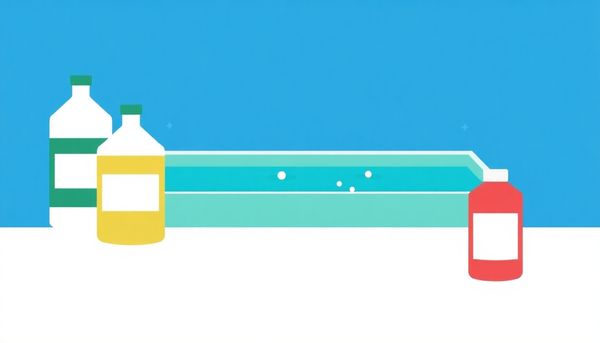
The allure of a pool closing kit often lies in its promise of simplicity—everything you need in one tidy package. Enthusiasts, both seasoned and new, may see it as a time-saving wonder, but is it truly indispensable? Consider a friend who always insisted on buying pre-packaged meal kits, only to discover they were paying for ingredients they already had in abundance. The same principle can apply to pool closing kits.
Each kit typically includes winter algaecide, a chlorine-free shock, and a floater, among other things. However, not every item inside is essential for every pool owner. An understanding of your pool's specific needs can help you determine the necessity of each component. For instance, if you’ve got a bottle of 60% Polyquat Algaecide tucked away in your pool shed, you may not need the algaecide from the kit. This particular type is non-copper-based, effective, and less likely to stain—a true hero in battling algae.
Moreover, while the convenience of a kit is tempting, especially for those with busy schedules, it’s wise to assess whether individual components align with your pool's unique conditions. Instead, you might opt for a reliable winter cover and a winter pill for added assurance, tailoring your approach to suit your pool’s environment. Ultimately, a closing kit may be convenient, but knowing your pool's specific needs ensures both efficiency and cost-effectiveness in your winterizing routine.
Determining the essential components of a pool closing kit can feel like deciphering a secret code. While these kits promise a hassle-free winter, not all items are indispensable. Let's sift through the mix to identify what truly counts.
Begin with the winter algaecide. This is your frontline defence against algae, crucial for preventing that dreaded green hue when spring arrives. Opt for a 60% Polyquat algaecide, which is copper-free and avoids staining—a small investment for clear, inviting water in the new season. Next, consider the chlorine-free shock. If you've already treated your pool with a chlorine shock during your prep, this might be redundant. However, having a non-chlorine option can be a gentle safeguard if your chlorine levels are stable.
Stain and scale prevention chemicals often spark debate. If your pool has known issues with metal content or scale, utilizing these might be worthwhile. Yet, a thorough clean and a robust pool cover can often render them unnecessary. Likewise, a winterizing ball or pill adds an extra layer of protection, releasing enzymes and clarifiers over time. It’s optional but a comfort for those seeking peace of mind.
Lastly, while phosphate removers and oil-absorbing sponges are nice extras, they are rarely essential if your pool is prepped and covered correctly. The key takeaway? Tailor your kit to your pool's specific needs, ensuring you’re not just buying convenience, but truly essential protection.
Every pool is a unique oasis, reflecting its owner's personal touch. Each pool, accordingly, has its own chemical needs when facing the hibernation of winter. While generic pool closing kits offer convenient solutions, they might not cater to your pool's distinct requirements. For instance, a friend of mine with a saltwater pool found that the standard kits were too chlorine-heavy for her taste. Instead, she opted for individual products that better aligned with her pool system's needs.
Begin by assessing the current condition of your pool. Factors like water makeup, any existing algae issues, or the type of pool surface can influence which chemicals are necessary. If your water has a high metal content, an algaecide that doesn’t contain copper would help in preventing stains. On the other hand, a pool prone to scale buildup might benefit from an enzyme-based product that isn’t always included in basic kits.
Moreover, consider the climate where you live. Pools in milder climates may not require as heavy a chemical load as those braving harsh, icy winters. Your aim should be to protect your pool from the specific challenges it will face in the coming months. Tailoring your approach by mixing and matching separate chemicals can often lead to better results than relying solely on a pre-packaged kit. Customizing your closing strategy ensures that when spring arrives, your pool is as pristine as you left it.
Navigating the maze of pre-close pool preparation can feel like walking a tightrope, but it’s essential for a seamless winter shut-down. When I tackled my own pool closing last year, I discovered the value of starting with a thorough cleaning. Skimming, vacuuming, and brushing the walls became my first line of defense against potential winter woes. Without ridding your pool of debris now, you risk inviting algae and other problems to a long winter party.
Testing the water’s chemistry is akin to giving your pool a clean bill of health before its long hibernation. Questions of pH, alkalinity, and calcium hardness levels should not be left unanswered. Adjusting these ensures that the chemicals work efficiently over winter. I recall the surprise of finding my pH levels wildly off balance; a quick correction saved me from potential springtime headaches.
Shocking the pool is a critical step. While calcium hypochlorite may take its time, its comprehensive cleaning action is worth the wait. For those impatient days, fast-dissolving shocks like dichlor can be your best friend, though mind the cyanuric acid levels to avoid unintended consequences. Once shocked, patience is essential; waiting for chlorine levels to stabilize is crucial before adding winterizing chemicals.
Remember, a week dedicated to these preparations is not time wasted. It’s an investment in a trouble-free pool opening, ensuring that when the cover comes off next spring, your pool is ready to greet the sun—minus the green water.
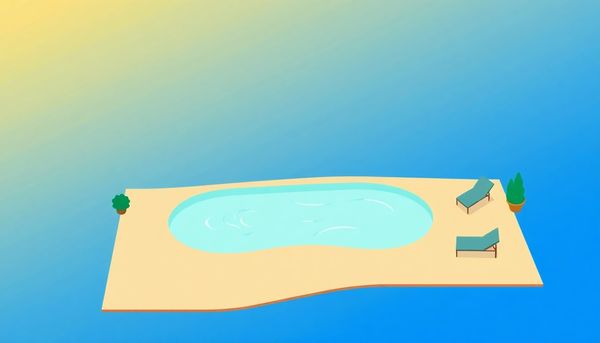
As the air grows brisk and the days shorten, preparing your pool for hibernation becomes an essential autumn ritual. Before reaching for a winterizing chemical kit, it's important to start with some basic groundwork. Begin with a thorough cleaning, scrubbing the pool walls and floor to remove any clinging debris or algae. This effort prevents these nuisances from worsening under the cover of winter.
Next, balance your pool's chemistry meticulously. Adjust the pH, alkalinity, and calcium hardness levels to their ideal ranges. This step ensures that the water remains stable and doesn't harm your pool's surfaces or equipment during the cold months. Once balanced, proceed with a shock treatment using a potent chlorine shock like calcium hypochlorite. This treatment eradicates any lingering bacteria and algae, setting a clean stage for the season ahead.
After the shock treatment, allow chlorine levels to normalize before introducing winterizing chemicals. Consider using a 60% Polyquat algaecide, which is effective throughout winter without causing stains or foam. While some kits offer extras like non-chlorine shock or stain removers, they might not be necessary if you've already prepped your pool thoroughly.
Lastly, ensure you have a reliable winter pool cover to keep leaves and debris from disrupting your chemical balance. A solid cover, combined with your careful preparation, is your best defense against springtime surprises. With these steps, your pool will rest easy until the first warm day calls it back to life.
Selecting the ideal closing kit for your pool is a bit like choosing the right tools for a project; it can make all the difference between a seamless experience and a season full of headaches. Each kit typically promises a hassle-free winter season by bundling essential chemicals like algaecides, stain preventatives, and chlorine-free shock. However, not every kit component is necessary for every pool, so it’s crucial to assess your pool's specific needs before making a purchase.
Consider what your pool requires based on its history and the local climate. If algae have been a persistent issue, a kit featuring a 60% Polyquat Algaecide will be indispensable. This particular type is excellent because it doesn’t foam or stain, unlike copper-based alternatives. For those concerned with staining or scaling, a Winterizer Ball or Pill might be beneficial, though it’s not a must-have if you’re diligent with pre-winter cleaning and covering.
Speaking from personal experience, investing in an air pillow for your above-ground pool is wise, especially in regions prone to heavy ice formation. It prevents ice from pressing against the walls, which can lead to costly damage. For inground pools, focus on a robust cover and essential chemicals to maintain balance.
Ultimately, a closing kit can be a worthwhile investment for those seeking convenience. Yet, if you’re comfortable managing individual chemicals and know your pool’s quirks, you might find that a tailor-made approach saves both money and effort.
In the realm of pool maintenance, achieving balanced water chemistry before closing your pool for the winter is crucial. It’s much like preparing a beloved pet for a long stay in a kennel; you wouldn’t send them off without ensuring their health and comfort. Similarly, your pool requires careful attention to its chemical conditions to endure the off-season unscathed.
Starting with pH levels, aim for a range between 7.2 and 7.6. This sweet spot ensures that your water isn’t too acidic or basic, which can otherwise lead to equipment corrosion or scale build-up. Don’t forget alkalinity, which buffers pH fluctuations. A level between 80 and 120 ppm keeps everything stable, much like a loyal friend holding your hand through life’s ups and downs.
Next, focus on calcium hardness. Too little can lead to etching of plaster, while too much causes scaling. Aim for a balance between 200 and 400 ppm. Overlooked by many, this step is vital in protecting the integrity of your pool surfaces and equipment.
Consider a personal anecdote: after neglecting these steps one winter, I greeted spring with murky water teeming with algae. Since then, I religiously monitor and adjust before closing. By ensuring your pool’s chemistry is in harmony, you’re not just preparing it for winter; you’re setting the stage for a seamless spring opening. In essence, this is not just maintenance; it’s safeguarding your summer joy.
As autumn's chill sets in, preparing your pool for winter becomes a top priority. One key player in this seasonal transition is the winter-ready algaecide, a guardian against the dreaded green invasion that can surface when spring rolls around. Algae, the uninvited guest that thrives when temperatures hover around 60°F, can wreak havoc on an unprotected pool, turning what should be a refreshing splash into a murky mess.
A favorite among pool owners is the 60% Polyquat Algaecide. Unlike copper-based counterparts, this formulation avoids staining and foaming, making it a reliable choice for those with high metal content in their water. Its potent concentration is designed to tackle algae head-on during the off-season, ensuring your pool remains pristine under its cover.
Reflecting on a personal experience, a friend once ignored this small yet mighty addition, confident their cover was sufficient. Come spring, they faced a time-consuming cleanup that could have been avoided. Investing in this algaecide not only conserves time but also reduces hassle, transforming the opening day of your pool into a celebration rather than a chore.
Incorporating a winter-ready algaecide is more than just a precaution—it's a strategic move in your pool care routine. This simple step safeguards your investment and guarantees a sparkling start to the swimming season, leaving you free to enjoy the sunshine and water without worry.
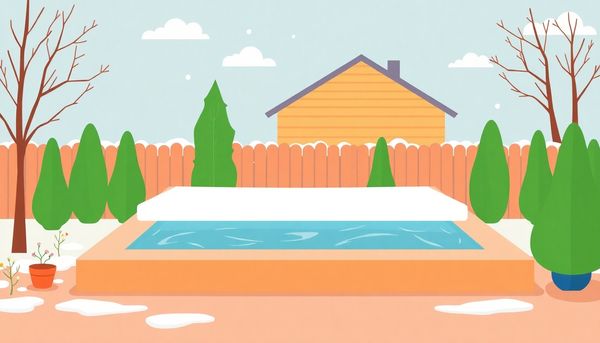
As autumn leaves begin to fall, pool owners face the challenge of keeping algae at bay during the winter months. Algae loves to turn pool water green and murky, making spring cleaning a nightmare. The key to preventing this unwelcome guest lies in a few strategic steps before you tuck your pool in for its seasonal slumber.
Start with a thorough cleaning. Scrubbing the walls and vacuuming the bottom ensures you aren't leaving any organic debris behind that can decompose and feed algae. Once your pool is sparkling clean, focus on balancing your water chemistry. Proper pH and alkalinity levels are crucial, as they support the effectiveness of winterizing chemicals.
Next, consider the power of a quality algaecide. A 60% Polyquat algaecide is a top choice, known for its non-foaming, non-staining properties. Unlike copper-based solutions, it doesn’t leave unwanted traces on pool surfaces. Although it might cost a bit more, its efficacy in keeping algae at bay makes it a wise investment.
Lastly, a reliable winter pool cover is your ally. A snug cover prevents sunlight from reaching the water, cutting off the algae's energy source. It also keeps out debris that could decompose and provide nutrients for algae growth.
These steps form a solid defense against algae, ensuring your pool remains pristine and ready for enjoyment when warmer weather returns. Share your stories of success, and enjoy the peace of mind that comes with a well-prepared pool.
As the cold months approach, thinking about closing your pool might not sound like the most thrilling task, yet it’s essential to ensure your investment remains pristine when spring returns. A winter-closing kit could be your best companion in this endeavor, bundled with a selection of chemicals designed to shield your pool from harsh winter conditions. Each of these kits typically includes a winter algaecide, stain prevention, chlorine-free shock, and a few other essentials.
Diving into specifics, a key component often found in these kits is a 60% Polyquat Algaecide. This chemical, superior due to its non-copper, non-staining formula, ensures that algae don't set up camp while your pool is hibernating. It’s the kind of precaution that means you won’t be greeted by a swamp when you lift the cover come spring. Another common item is a non-chlorine shock. While it may seem redundant if you’ve already prepped your pool, it offers peace of mind by keeping any sneaky contaminants at bay without affecting your liner.
The convenience of these kits lies in their comprehensive nature. They save time and possibly money by bundling everything needed into one package. However, not every component is a must for every pool owner. For those with high metal content in the water, products like a Winterizer Ball or Winter Pill may provide an extra layer of protection against stains and scaling. Ultimately, these kits offer a convenient way to ensure your pool is ready to spring back to life after the frosts have thawed.
When the time comes to tuck your pool in for the winter, strategically applying algaecide becomes your frontline defense against the dreaded springtime green. This isn't just about adding another chemical; it's about ensuring your water stays pristine beneath the cover, no matter how long the cold lingers. Choosing the right algaecide can be the difference between a seamless opening next season and dealing with a swamp.
Begin by considering a 60% Polyquat Algaecide. This choice might cost a bit more than its copper-based counterparts, but the benefits far outweigh the expense. Its non-staining, non-foaming properties make it a favorite among pool owners who value long-term water quality without the hassle of unexpected stains. The power of this algaecide lies in its ability to effectively prevent algae growth without affecting other pool chemicals, keeping your pool's ecosystem in check.
Timing is crucial. You want to add the algaecide when the water is still circulating, ideally a few days after your last shock treatment. This allows the algaecide to distribute evenly throughout the pool, fortifying every nook and cranny against algae spores. Remember, a well-chosen and timely-applied algaecide will make your pool opening as smooth as closing, saving you time and effort come spring. Whether you're using a comprehensive pool closing kit or selecting chemicals individually, prioritizing algaecide application is key to maintaining a clean and inviting swimming environment year-round.
As the summer sun fades and the crisp autumn air sets in, preparing your pool for the winter months becomes essential. One crucial step often overlooked in this process is optimizing your pool's water balance. Unlike a quick dip on a hot day, balancing your pool's chemistry requires precision and forethought. Proper chemical balance acts as a protective shield for your pool against the harsh conditions of winter, ensuring that everything is set for a trouble-free opening come spring.
Start by testing your water thoroughly. This isn't just about glancing at pH levels; delve into the specifics of alkalinity and calcium hardness as well. Think of it as a health check-up for your pool. Adjusting these levels matters because an imbalanced pool can lead to issues like corrosion or scaling. Imagine returning in spring to find your pool’s surfaces damaged by winter's grasp—that’s a costly headache you want to avoid.
Using a chlorine shock can help eliminate any lurking bacteria or algae, but timing is key. Opt for an evening application and allow it to work overnight, ensuring thorough circulation. This step is akin to giving your pool a final cleanse, setting the stage for a restful winter. Once balanced, your winterizing chemicals, such as algaecide and stain preventers, can perform optimally, safeguarding your pool until the first warm breeze of spring.
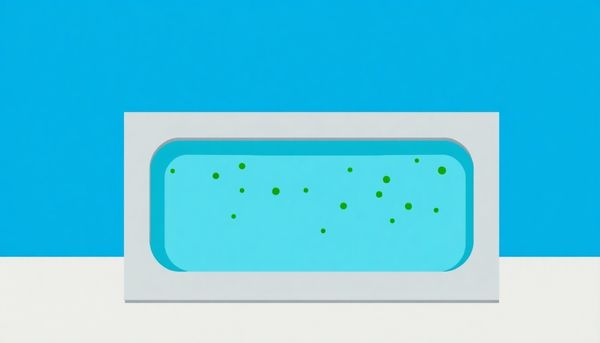
Balancing your pool's water chemistry before the chill sets in is like setting the stage for a peaceful winter's rest. With summer's end on the horizon, it's crucial to ensure every drop in your pool is in perfect harmony. Start by checking the pH levels—a crucial factor that determines how effective your winterizing chemicals will be. The ideal pH range is between 7.2 and 7.6, where your pool's defenses against algae and bacteria are at their strongest.
Next, focus on the alkalinity. This acts as a buffer for pH, preventing sudden fluctuations that could otherwise disrupt your pool's delicate ecosystem. Aim for an alkalinity level between 80 and 120 parts per million (ppm). Meanwhile, calcium hardness, often overlooked, plays a silent role in protecting your pool surfaces. A reading between 200 and 400 ppm will safeguard against potential scaling or etching.
A personal tip: after testing, I often find myself needing to adjust these parameters slightly. To do so, I rely on trusty products like pH increasers or reducers and alkalinity boosters. Lastly, once these parameters are in check, introduce a chlorine shock to eliminate any lingering bacteria. This step, essentially a deep clean for your pool, lays the groundwork for a successful hibernation.
By meticulously balancing the water chemistry now, you set yourself up for a smooth pool opening come spring. It's a bit of work upfront, but trust me, your future self will thank you for the effort.
When it comes to preparing your pool for its winter slumber, choosing the right closing supplies is crucial. Having spent countless hours trying to decipher the must-haves from the marketing gimmicks, I've learned that simplicity is key. You want to ensure that when spring arrives, your pool is as inviting as the first day of summer. Let's talk about the essentials.
First and foremost, a robust algaecide will be your best friend. A 60% Polyquat Algaecide is highly recommended as it offers a powerful defense against algae over the colder months without leaving any unsightly stains. While its price tag might be a tad higher, the peace of mind it provides is worth every penny.
Next, consider the Winter Pill. This little marvel slowly releases a blend of enzymes and clarifiers to keep your water crystal clear beneath the cover. Though optional, it acts like an insurance policy, especially if you’ve battled with stains or scaling in the past.
A good winter cover is indispensable. It shields your pool from debris and harsh weather, ensuring that no unwanted guests spoil the party over the winter. If you're safeguarding an above-ground pool, an air pillow is essential to mitigate ice damage.
Lastly, while many kits offer a multitude of extras like sponges or floaters, remember that if you've cleaned thoroughly and balanced your water, these are often unnecessary. Choose wisely and your pool will thank you when it's time to open again.
As the autumn leaves begin their descent and the chill of winter approaches, ensuring your pool remains crystal clear through the off-season becomes a priority. One crucial player in this endeavor is algaecide, a formidable ally against the stubborn green invader—algae. Let’s face it, no one wants to unveil their pool in spring only to find it transformed into a swamp. Here’s why including an effective algaecide in your pool closing routine is a smart choice.
Consider the 60% Polyquat Algaecide, known for its potency and reliability. Unlike copper-based alternatives, this non-foaming solution minimizes the risk of staining, especially crucial if your pool water is rich in metals. Its ability to work silently under the cover, keeping algae at bay all season, ensures you don't have to battle a full-blown algae infestation when the sun starts warming things up again.
Remember how frustrating it can be to deal with algae cleaning in the peak of swimming season? Skipping this step at pool closure could lead to that same frustration doubled come springtime. An algaecide in your closing kit acts like a vigilant guard, tackling microscopic threats before they can multiply. Even as temperatures dip below 60°F, this invisible defender ensures peace of mind, leaving you free to enjoy winter’s serene beauty without the burden of pool maintenance worries.
Investing in a quality algaecide as part of your pool closing ritual not only saves time and stress but also preserves the joy of that first splash when the warmer months return.
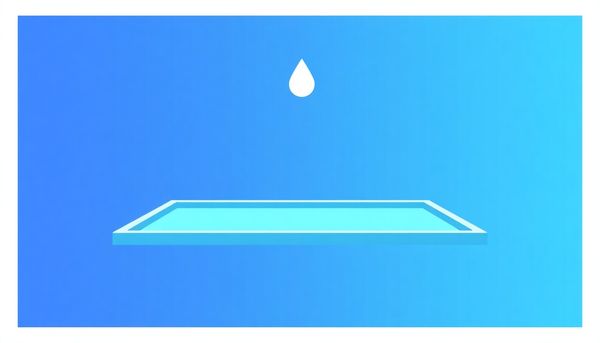
This article provided insights into maintaining your pool. Start your pool care journey today!
Want to become a pool maintenance expert? Our free Pool School course covers everything you need to know about pool care. From basic maintenance to advanced troubleshooting, you'll learn how to:
Join over 10,000 pool owners who have already transformed their pool care routine. Get started with our free Pool School course today!